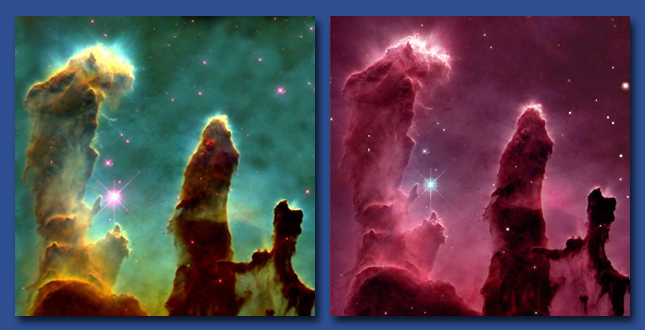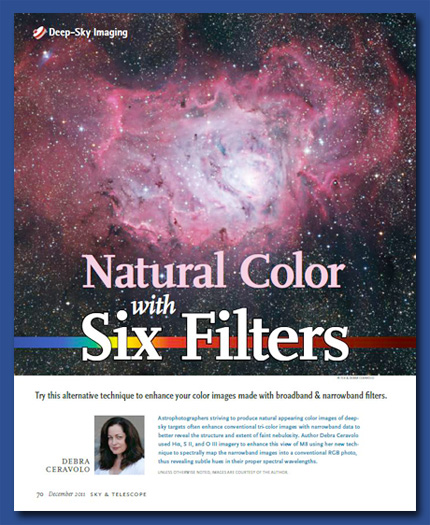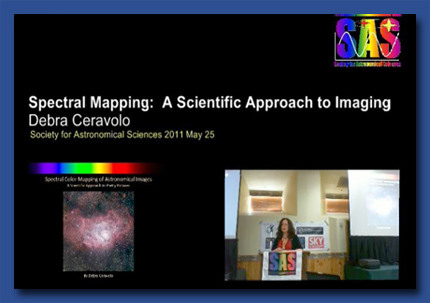Technical > Astronomical Photography > Our processing philosophy
Images impact the way we think and see the world, even the universe. Every time a stunning photo from the Hubble space telescope is released to the public, fully processed to reveal the wonderful and strange cosmic interactions, we (the royal we) say it must be true. How can we say otherwise? Unless you are a seasoned astronomical imager and processor, we believe what we see, even if the colour has nothing to do with reality. After all, these images are scientifically based so they must be true, right?
We (Debra and Peter) often wonder how many teachers, children and non-astronomers were dismayed to learn that the colours of the universe often portrayed are false. Like Hubble's famous 'Pillars of Creation' image below left where the red hydrogen gases are coloured green. On the right is the same Hubble image re-processed by Michael Benson to reveal the more natural colours.

Not to knock the amazing work and public outreach of NASA'a Hubble team, but the brilliantly saturated and strangely colourful objects have become the norm and expected. It has become very difficult to know what the natural colours of the universe really are.
But there is a small voice in the world community that deserves to be heard, one that is quietly fighting against the over stimulation of the culture that includes falsely coloured portrayals of celestial objects. These people agree that there is a need for a more balanced view, and a greater appreciation for the subtle details in photography in general, especialy astro-photography.
Read more about our thoughts on processing techniques and philosophy. 43kb pdf
Read Debra's Sky and Telescope article on natural colour processing using narrowband filters. 2mb pdf.

See Debra's talk on spectral mapping of astronomical images at the Society for Astronomical Sciences conference in Big Bear, California 2011.
